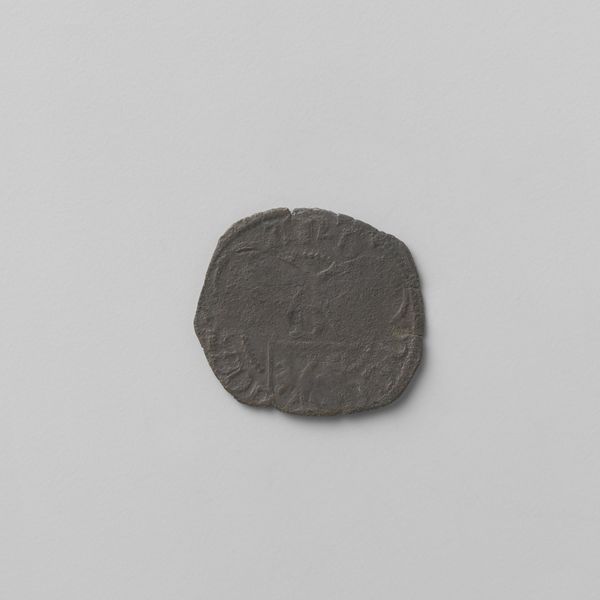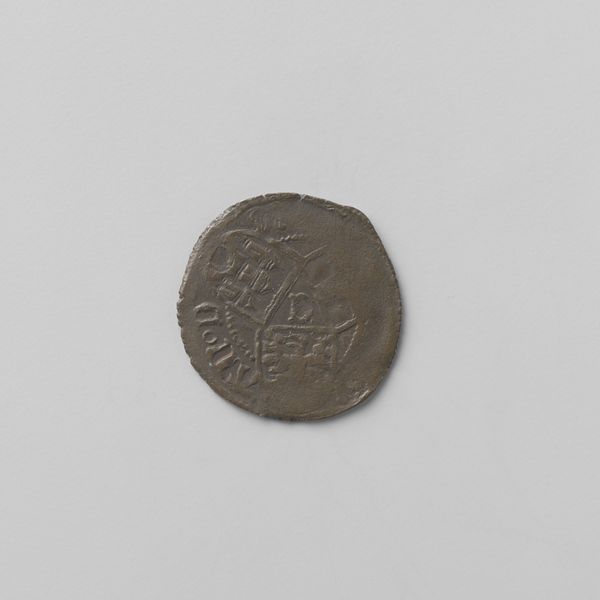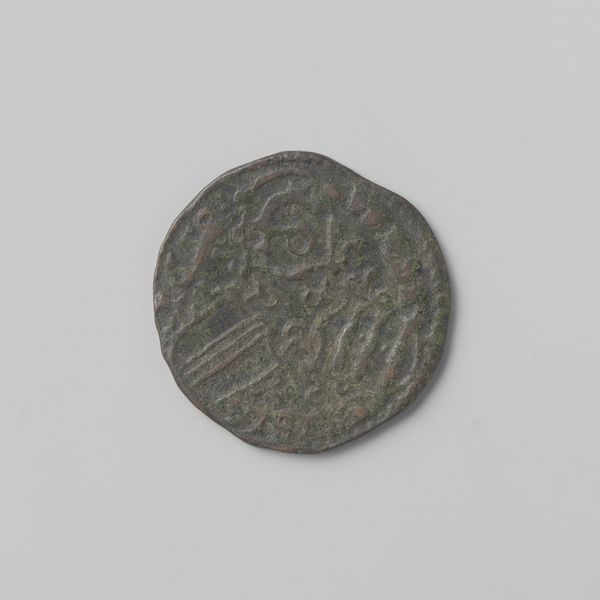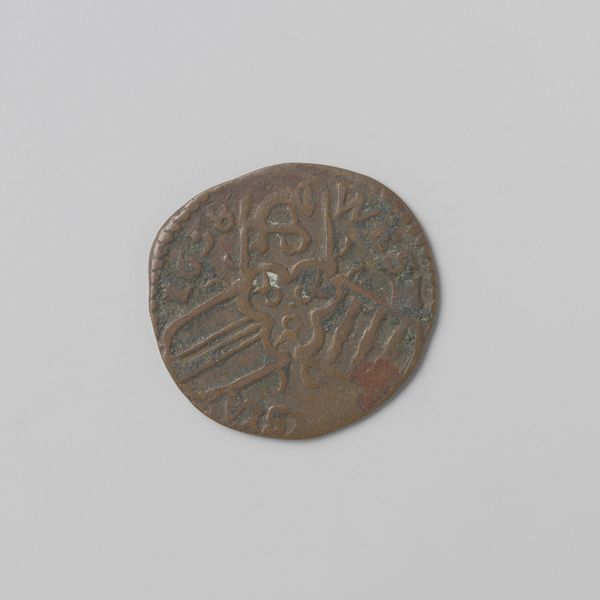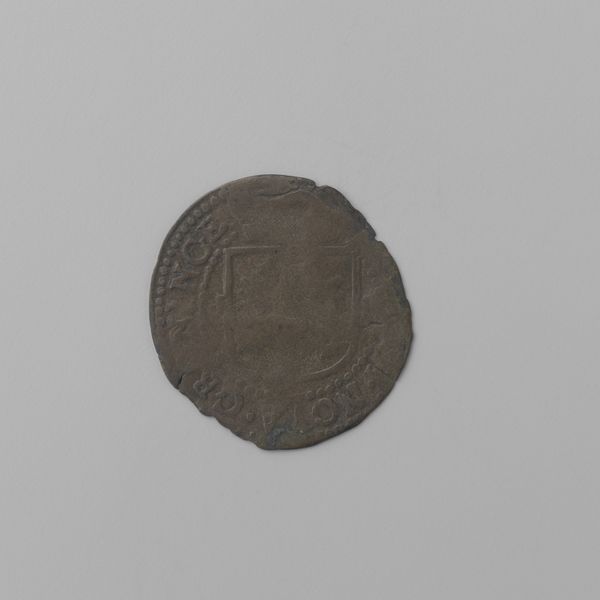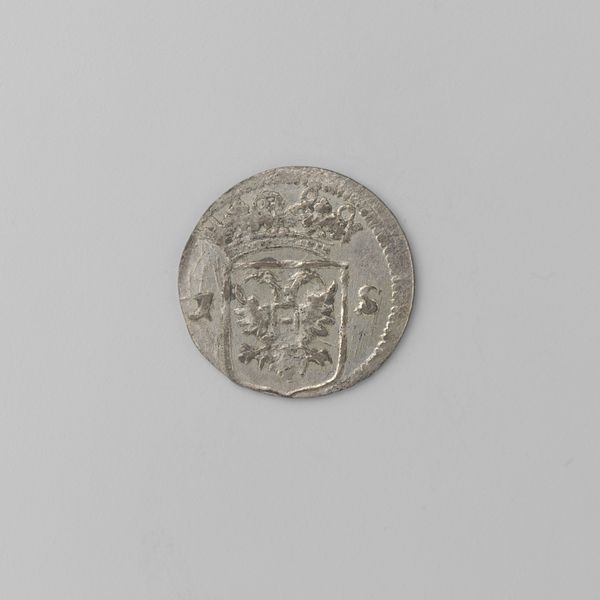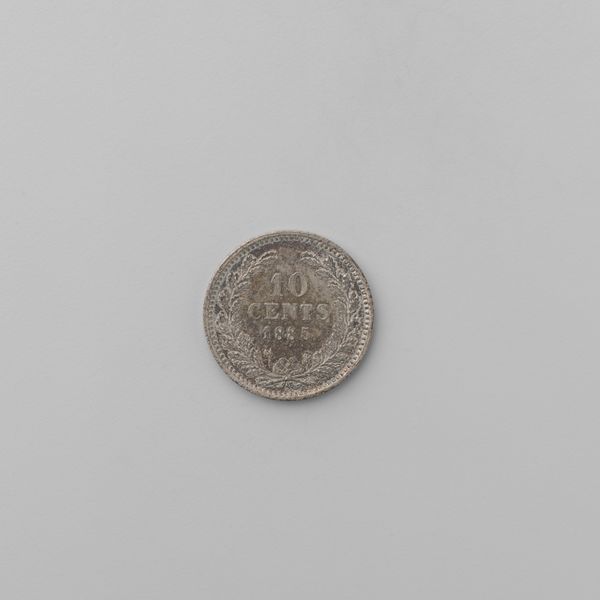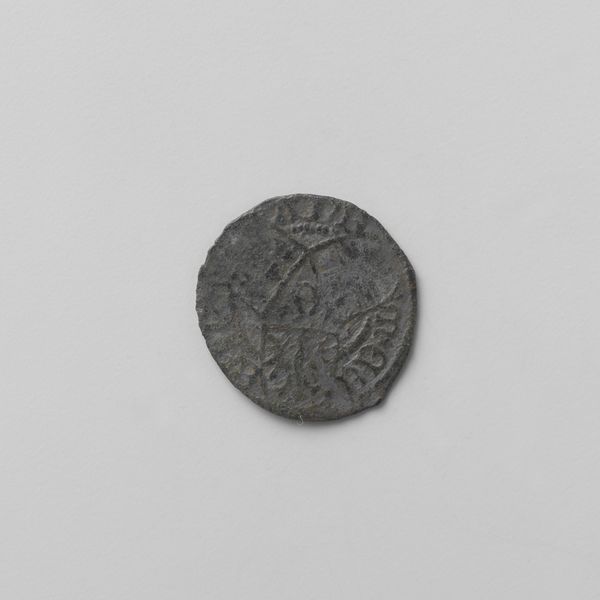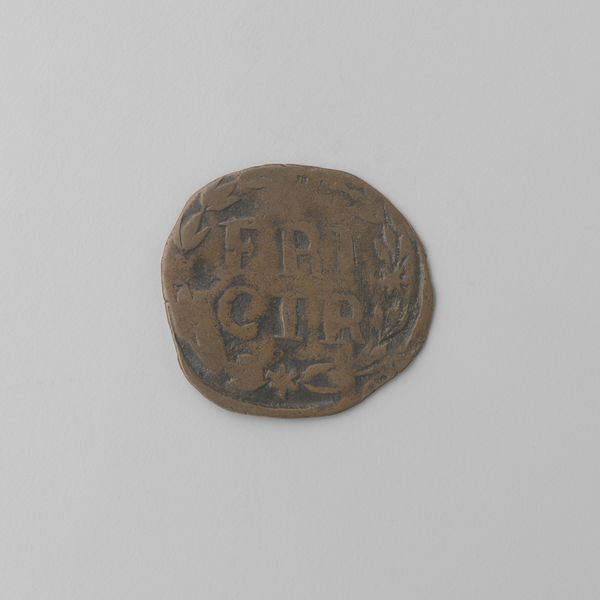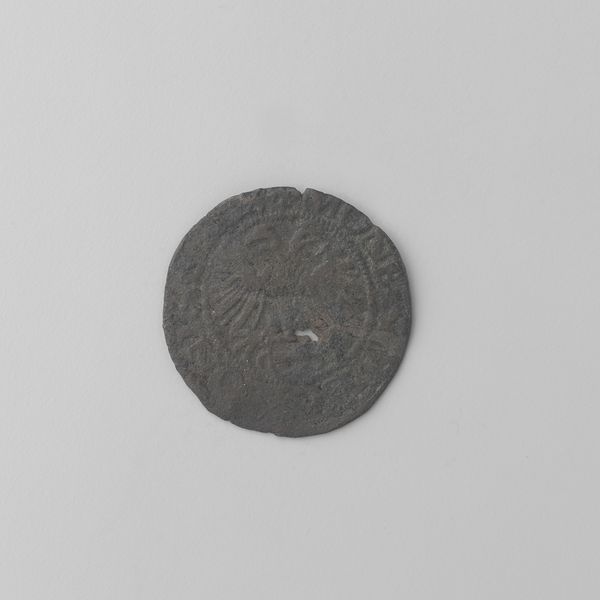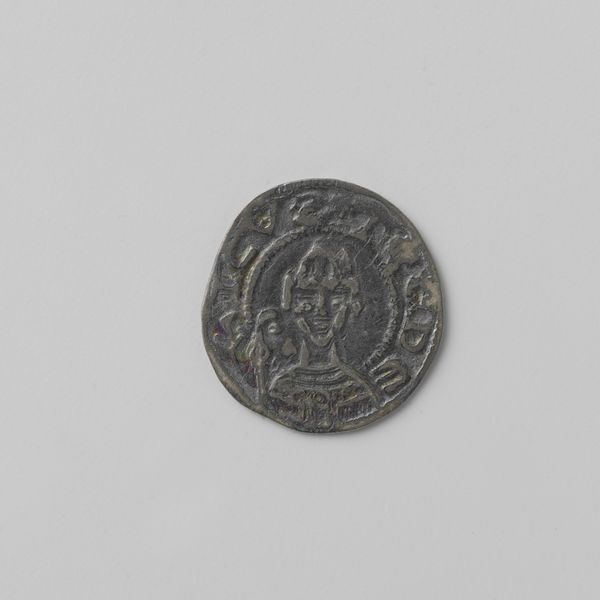
metal
#
metal
#
ancient-mediterranean
Dimensions: diameter 1.5 cm, weight 0.44 gr
Copyright: Rijks Museum: Open Domain
Curator: Here we have "Halve plak van de Drie Steden", dating from 1534, crafted from metal. A humble coin. Editor: It looks almost ghostly, doesn’t it? Very worn. And somehow severe despite its size. I imagine someone clutching it tightly for security. Curator: These "Drie Steden" referred to three Dutch cities joining forces - that’s a powerful statement of political unity, rendered in miniature, circulating amongst the populace. Coinage in this period became critical, a token legitimizing emerging powers. Editor: It is compelling that a simple image could solidify the union, even create an identity out of the union of these cities, what symbolism can you glean from the markings? They are obviously emblematic but how can it give agency? Curator: Indeed, we have heraldic devices compressed onto this small surface. This served as propaganda but, just as significantly, it facilitated burgeoning trade and governance. Editor: Imagine, every transaction reinforces a visual pledge. Like a quiet, insistent hum in the background of daily life! So, who did decide on the image, did these symbols carry a cultural legacy for the populations? Curator: Undoubtedly there were specific emblems deeply ingrained in the citizens' understanding of their world. Its very existence marks a pivotal moment, the Dutch burghers seizing control. Money truly became power in the late Renaissance! Editor: Something so small bearing the weight of a socio-economic revolution! Now I understand why I feel so impressed with its presence. Thank you. Curator: My pleasure, its always fulfilling to observe our currency origins and influence.
Comments
No comments
Be the first to comment and join the conversation on the ultimate creative platform.
